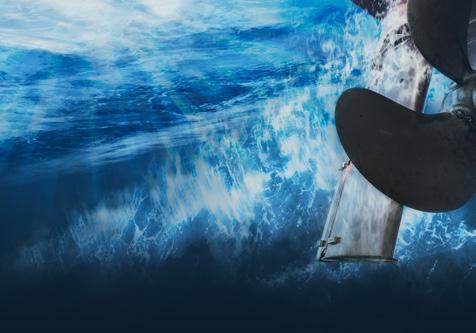
2 minute read
Baltic Research into underwater Noise
Balt ic research into underwat er noise
As shipping and marine infrastructure increases, Finland is measuring underwater noise that negatively affects marine life in order to raise awareness and develop strategies to minimise its impact.
Advertisement
As underwater noise travels long distances, international cooperation is a must, together with reliable data. From 2012 to 2016, the Finnish Environment Institute led an international project – Baltic Sea Information on the Acoustic Soundscape (bias) – to measure the level of man-made underwater noise. For the first time ever, the entire Baltic Sea was covered, and measurements were taken in 38 different places. Sweden, Estonia, Poland, Germany and Denmark took part in the project to help the EU’s marine waters achieve good environmental status by 2020.
Offshore wind farms generat e noise Noise is caused by variety of activities at sea, such as shipping and marine infrastructure. It can change animal behaviour, disrupt communication, physically harm fish and marine creatures, and even endanger entire populations. The soundscape is vital to fish because they use sound and hearing to communicate, mate and to avoid predators.
As both shipping and marine infrastructure (among others offshore wind farms) is growing, the joint bias project raised public awareness and produced a number of tools to help authorities plan how to best use maritime areas and reduce the harmful impact of noise. The measurements showed that the noise caused by shipping is highest in the southern Baltic region, particularly in the Danish straits. »Conversely, there are
»There are areas in the Gulf
of Finland where man-made noise is very rare.« – Jukka Pajala, Finnish Environment Institute.
areas in the Gulf of Finland where man-made noise is very rare«, explains Jukka Pajala, senior adviser at the Finnish Environment Institute. Although the harmful impacts of noise vary according to the time of year, there is a lot more noise in winter. As water temperature and salinity stratification cause dramatic changes in the speed of sound and therefore affect how sound travels, new research data is needed to measure seasonal variations more accurately and to examine the sensitivity of endemic species.
To raise awareness, the Finnish Environment Institute has published sound files of different noises. These include a small boat in the Archipelago Sea, a seismic blasting 200 km away, cracks of ice, a motorboat or a quiet summer’s day in the Åland Islands.
syke.fi










